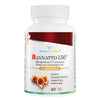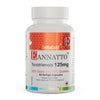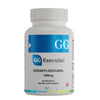Blogs

How to Use Vitamin E Capsules for Hair Health?
Learn how to use Vitamin E capsules for hair health. From reducing oxidative stress to promoting hair growth and protecting against UV damage, Tocotrienols Vitamin E offers many benefits for...
How to Use Vitamin E Capsules for Hair Health?
Learn how to use Vitamin E capsules for hair health. From reducing oxidative stress to promoting hair growth and protecting against UV damage, Tocotrienols Vitamin E offers many benefits for...

Vitamin E for Scars and Blemishes: Are Suppleme...
Learn the truth about Vitamin E for scars and blemishes: Are supplements useful? Know its benefits, application methods, and expert insights for achieving healthier-looking skin.
Vitamin E for Scars and Blemishes: Are Suppleme...
Learn the truth about Vitamin E for scars and blemishes: Are supplements useful? Know its benefits, application methods, and expert insights for achieving healthier-looking skin.

Surprising Use of Vitamin E For Bone Health
Learn the surprising benefits of Vitamin E for bone health. Learn how it promotes bone formation, density, and disease prevention. Explore dietary sources and considerations for supplementation.
Surprising Use of Vitamin E For Bone Health
Learn the surprising benefits of Vitamin E for bone health. Learn how it promotes bone formation, density, and disease prevention. Explore dietary sources and considerations for supplementation.

Stress Relief Vitamins: Who Should Take Vitamin...
Learn who can benefit from vitamin supplementation for stress management, from those with nutritional deficiencies to individuals with high stress levels seeking natural remedies. Get insights on choosing quality vitamins...
Stress Relief Vitamins: Who Should Take Vitamin...
Learn who can benefit from vitamin supplementation for stress management, from those with nutritional deficiencies to individuals with high stress levels seeking natural remedies. Get insights on choosing quality vitamins...

10 Surprising Vitamin E Benefits for Hair and S...
Unlock the secrets to healthy hair with this blog on Vitamin E Benefits for Hair and Scalp Health. Learn how to harness vitamin E benefits for hair growth and shine.
10 Surprising Vitamin E Benefits for Hair and S...
Unlock the secrets to healthy hair with this blog on Vitamin E Benefits for Hair and Scalp Health. Learn how to harness vitamin E benefits for hair growth and shine.

What are the Benefits of Vitamins for Good Brai...
Nourishing your brain with the right nutrients may significantly support your cognitive abilities, mood, and overall mental health. With this blog post, you can learn about the role of various...
What are the Benefits of Vitamins for Good Brai...
Nourishing your brain with the right nutrients may significantly support your cognitive abilities, mood, and overall mental health. With this blog post, you can learn about the role of various...







